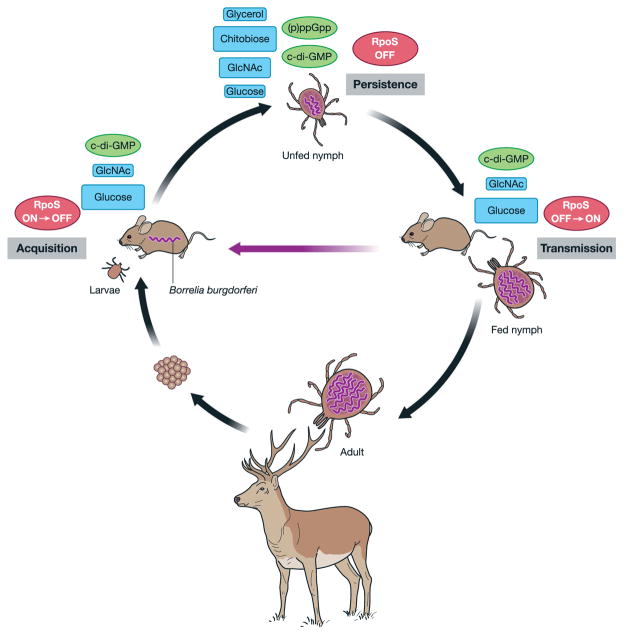Fig. 1.
The enzootic cycle of B. burgdorferi. Acquisition: larval ticks must acquire B. burgdorferi by feeding on an infected vertebrate as the bacterium is not transovarially transmitted. Persistence: intracellular second messengers (p)ppGpp and c-di-GMP regulate persistence in the tick by various mechanisms, including modulation of carbohydrate preference, while the molecular gatekeeper RpoS is absent in unfed ticks. Transmission: following the molt into nymphs, infected ticks can transmit B. burgdorferi to uninfected hosts, completing the cycle. Adapted from Brisson et al. (2012). GlcNAc, N-acetyl glucosamine.

